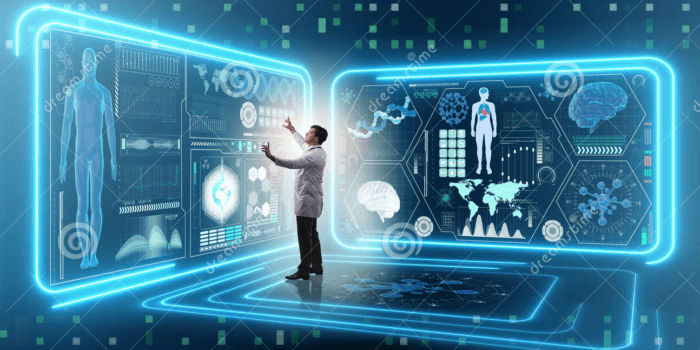

The Role of R&D in Cybersecurity
Development and research in cyber security involves systematic study and testing with the goal of discovering novel ideas and creating modern technology to safeguard information systems. It includes a number of activities, such as:
Threat analysis is the process of understanding and appreciating new internet risks and ways to be attacked.
Technology development is the procedure that produces new instruments, methods, and structures to stop, identify, and address cyberattacks.
Establishing best practices and suggestions for enhancing security across industries is the objective of policy and standards formulation.
By investing in R&D, organizations can stay ahead of cyber adversaries, ensuring that their defenses evolve in tandem with the threat landscape.
Innovations in Cybersecurity Driven by R&D
1. AI-Powered Threat Detection and Response
A vital part in modern cybersecurity techniques is artificial intelligence. AI algorithms were created through research and development to evaluate enormous amounts of data, spot patterns that point to harmful behavior, and react instantly. By examining behavioral anomalies in network traffic, some of cybersecurity companies have incorporated machine learning models that can identify zero-day exploits, or vulnerabilities that have not yet been discovered.
2. Quantum-Safe Cryptography
The development of quantum computing could put conventional methods of encryption at risk. The developing of quantum-resistant algorithms has been the primary goal of research and development in response. After eight years of research, the National Institute of Standards and Technology (NIST) certified three post-quantum cryptography algorithms, which is a major step in becoming ready for the cybersecurity concerns of the quantum future.
3. Zero Trust Architecture (ZTA)
One security architecture that has gained popularity is the Zero Trust Architecture, which does not rely on implicit trust in a network. In order to develop frameworks and tools for effective implementation of ZTA, research and development has been essential. ZTA models, which employ micro-segmentation and continuous authentication to reduce attack surfaces and enhance overall security posture, were implemented by a number of enterprises in 2023.
4. Secure Development Lifecycle (SDL) Integration
Integration of the Secure Development Lifecycle (SDL)
Research and development has focused on integrating security measures at each phase of the software development lifecycle. The chance of vulnerabilities in security in deployed apps is reduced by this proactive approach.
5. Advanced Threat Intelligence Platforms
Advanced threat intelligence platforms that compile data from various sources and provide helpful insights into new threats have been developed as a result of research and development efforts. By using AI and machine learning to forecast potential dangers, these solutions allow companies take proactive measures.
6. Blockchain for Enhanced Security
Partly because of its decentralized and irreversible nature, blockchain technology has being explored for cybersecurity applications through development and research. A number companies created blockchain-based solutions in 2023 for data integrity verification and safe identity management, offering substantial safeguards against fraud and unauthorized access.
7. Biometric Authentication Advances
Biometric systems are gradually replacing or complementing traditional methods of authentication. Research and development have resulted in more accurate and customer-friendly biometric authentication systems, such as facial recognition and behavioral fingerprinting, which improve security without compromising user experience.
8. Cybersecurity for Internet of Things (IoT) Devices
There are now more security issues as a result of the growth of IoT devices. Development and research efforts have been focused on creating intrusion detection systems and lightweight techniques for encryption that are suited for limited in resources IoT devices. A few organizations introduced IoT security frameworks in 2024 that provide real-time threat monitoring and encryption at all times.
9. Human-Centric Security Awareness Training
R&D has produced interactive and customized security awareness training items in acknowledgment of the fact that human error plays an important part in security breaches. These initiatives successfully teach staff members cybersecurity best practices through the use of gamification and adaptive methods of learning.
10. Automated Incident Response Systems
The advancement of research has made it possible to create automated incident response systems that can rapidly neutralise and contain cyberthreats. The time and impact of safety events are decreased by these systems’ integration with the current security infrastructure, providing real-time analysis and automated response protocol execution.
R&D will continue to play an increasingly significant role in cybersecurity. Cybersecurity confronts both opportunities and problems from emerging technologies which includes 6G networks, edge computing, and quantum computing.
To maintain the benefits of R&D, firms must promote a culture of innovation. This includes investing in talent development, fostering multidisciplinary collaboration, and allocating money to long-term projects that might not generate immediate returns. Companies such as Google, Microsoft, and Cisco are setting a good example by allocating major portions of their finances to cybersecurity research and development while creating settings that promote innovative problem solving.
Furthermore, startups and new technology enterprises are becoming increasingly essential players in the cybersecurity R&D ecosystem. By focusing on specialist areas such as IoT security, behavioral biometrics, and AI-driven threat detection, these small enterprises provide important findings and technology that complement the work of larger organizations.
The complexity and frequency of cyber threats are only going to grow, making R&D an essential element of safety measures. R&D ensures that companies have the skills to handle the rapidly evolving cybersecurity landscape by bridging the gap between emerging risks and defensive technological advances, encouraging cross-industry collaboration, and solving accessibility issues. R&D-driven developments, such as advanced threat intelligence systems, quantum-resistant encryption, and secure IoT frameworks, are securing the digital future. Investing in R&D is a must for organizations who want to stay ahead of the competition.





